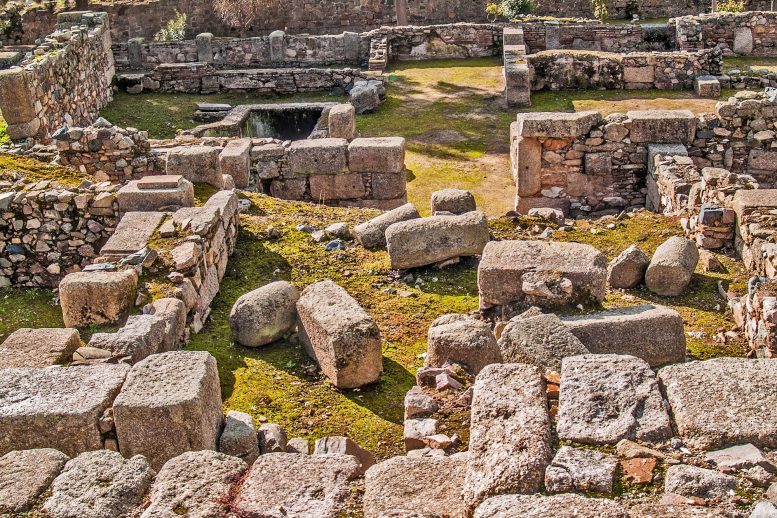
For over 400 years, the Himyarites held control over much of southern Arabia.
Droughts in the sixth century helped Islam gain ground
Extreme dryness aided the collapse of the ancient South Arabian kingdom of Himyar. The journal Science has recently published these discoveries by researchers from the University of Basel. The droughts left an area in disarray and, when coupled with political unrest and war, helped to create the circumstances necessary for the spread of the newly formed religion of Islam on the Arabian peninsula.
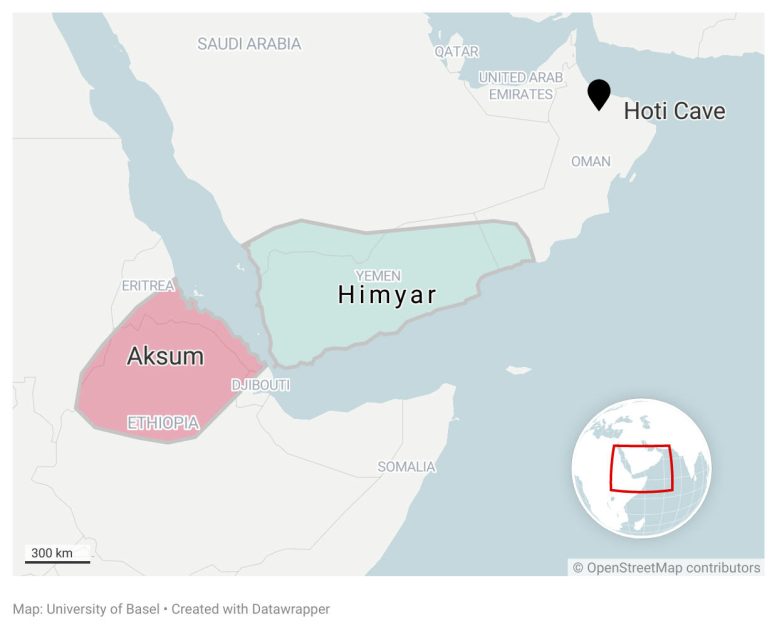
Map of the ancient South Arabian kingdom of Himyar and the location of the Hoti cave. Credit: University of Basel
There are still traces of the Himyarite Kingdom on the plateaus of Yemen. Terraced fields and dams were a part of an extremely complex irrigation system that turned the semi-desert into fertile farmland. For many years, Himyar was a well-established region in South Arabia.
However, despite its prior might, the kingdom had a crisis in the sixth century CE, which resulted in its defeat by the nearby kingdom of Aksum (now Ethiopia). Extreme drought, a previously unrecognized factor, may have played a significant role in the upheavals in ancient Arabia that led to the rise of Islam in the seventh century. Researchers under the direction of Professor Dominik Fleitmann recently released their findings.
Petrified water acts as a climate record
The layers of a stalagmite from the Al Hoota Cave in Oman were examined by Fleitmann’s team. The amount of precipitation that falls above the cave has a direct correlation with the stalagmite’s development rate and the chemical makeup of its layers. As a consequence, the stalagmite’s shape and isotopic composition of its deposited layers serve as an important archive of past climate.
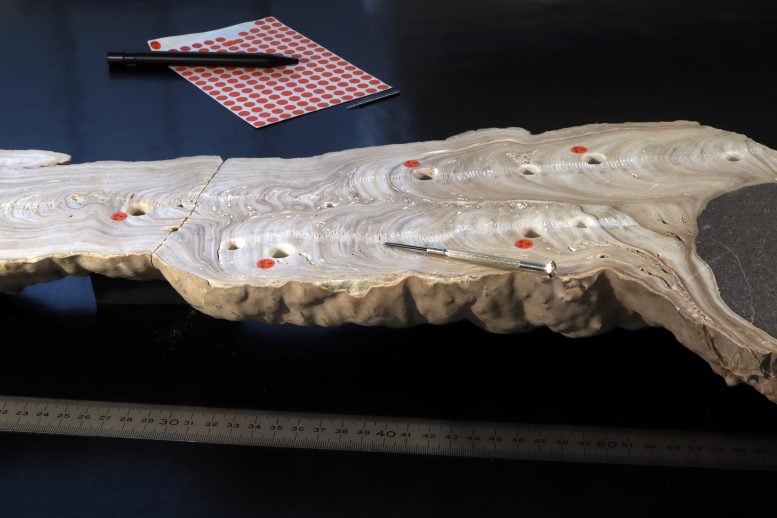
Stalagmite from the Hoti Cave. Holes are created by sampling for radioactive dating, and scratch marks by sampling for isotope analysis. Credit: Timon Kipfer, University of Basel
“Even with the naked eye you can see from the stalagmite that there must have been a very dry period lasting several decades,” says Fleitmann. When less water drips onto the stalagmite, less of it runs down the sides. The stone grows with a smaller diameter than in years with a higher drip-rate.
The stalagmite layers’ isotopic analysis enables scientists to estimate the yearly rainfall levels. For instance, they found that there must have been a severe drought in addition to the fact that less rain fell over a longer period of time. The researchers were able to date the dry era to the early sixth century CE using the radioactive decay of uranium, however only to within 30 years.
Detective work in the case of Himyar’s demise
“Whether there was a direct temporal correlation between this drought and the decline of the Himyarite Kingdom, or whether it actually didn’t begin until afterward – that was not possible to determine conclusively from this data alone,” explains Fleitmann. He, therefore, analyzed further climate reconstructions from the region and combed through historical sources, collaborating with historians to narrow down the time of the extreme drought, which lasted several years.
“It was a bit like a murder case: we have a dead kingdom and are looking for the culprit. Step by step, the evidence brought us closer to the answer,” says the researcher. Helpful sources included, for example, data about the water level of the Dead Sea and historical documents describing a drought of several years in the region and dating to 520 CE, which do indeed connect the extreme drought with the crisis in the Himyarite Kingdom.
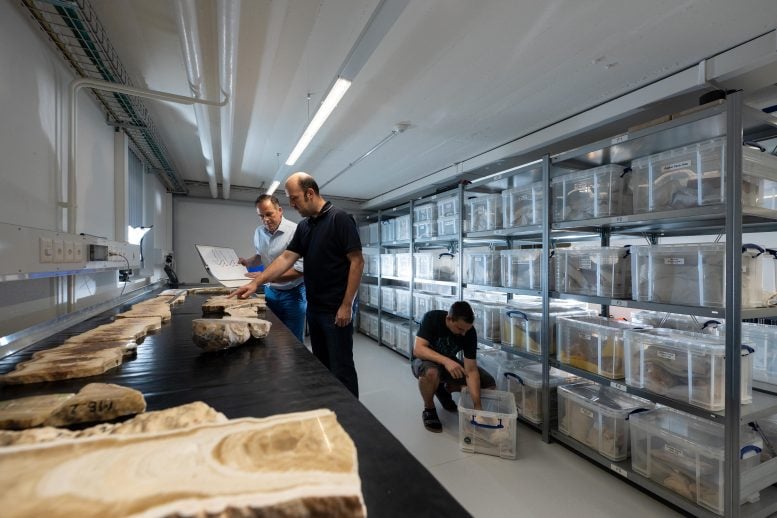
With his research team, Dominik Fleitmann (left) analyzes stalagmites from various dripstone caves to reconstruct the climate of the past. Credit: Christian Flierl, University of Basel
“Water is absolutely the most important resource. It is clear that a decrease in rainfall and especially several years of extreme drought could destabilize a vulnerable semi-desert kingdom,” says Fleitmann. Furthermore, the irrigation systems required constant maintenance and repairs, which could only be achieved with tens of thousands of well-organized workers. The population of Himyar, stricken by water scarcity, was presumably no longer able to ensure this laborious maintenance, aggravating the situation further.
Political unrest in its own territory and a war between its northern neighbors, the Byzantine and Sasanian Empires, spilling over into Himyar, further weakened the kingdom. When its western neighbor of Aksum finally invaded Himyar and conquered the realm, the formerly powerful state definitively lost significance.
Turning points in history
“When we think of extreme weather events, we often think only of a short period afterward, limited to a few years,” Fleitmann says. The fact that changes in the climate can lead to states being destabilized, thereby changing the course of history, is often disregarded. “The population was experiencing great hardship as a result of starvation and war. This meant Islam met with fertile ground: people were searching for new hope, something that could bring people together again as a society. The new religion offered this.”
That does not mean to say the drought directly brought about the emergence of Islam, emphasizes the researcher. “However, it was an important factor in the context of the upheavals in the Arabian world of the sixth century.”
Box: Precipitation and stalagmites
In tropical and subtropical regions, there is a connection (correlation) between the amount of precipitation and its isotopic composition, also known as the “amount effect”. The more it rains, the more the ratio between the lighter and heavier oxygen isotopes, 16O and 18O, shifts in favor of the lighter 16O in the precipitation. These changes are recorded in the stalagmite from Oman, as it is formed from dripping rainwater. Based on isotopic measurements of the stalagmite’s limestone layers, it is possible to determine the exact ratio of 16O and 18O and, in combination with uranium dating, to reconstruct how much it rained at what point in time.
Reference: “Droughts and societal change: The environmental context for the emergence of Islam in late Antique Arabia” by Dominik Fleitmann, John Haldon, Raymond S. Bradley, Stephen J. Burns, Hai Cheng, R. Lawrence Edwards, Christoph C. Raible, Matthew Jacobson and Albert Matter, 16 June 2022, Science.
DOI: 10.1126/science.abg4044





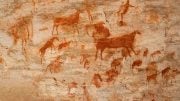
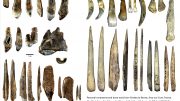


Be the first to comment on "Scientists Finally Discover What Caused the Collapse of This Ancient Kingdom"